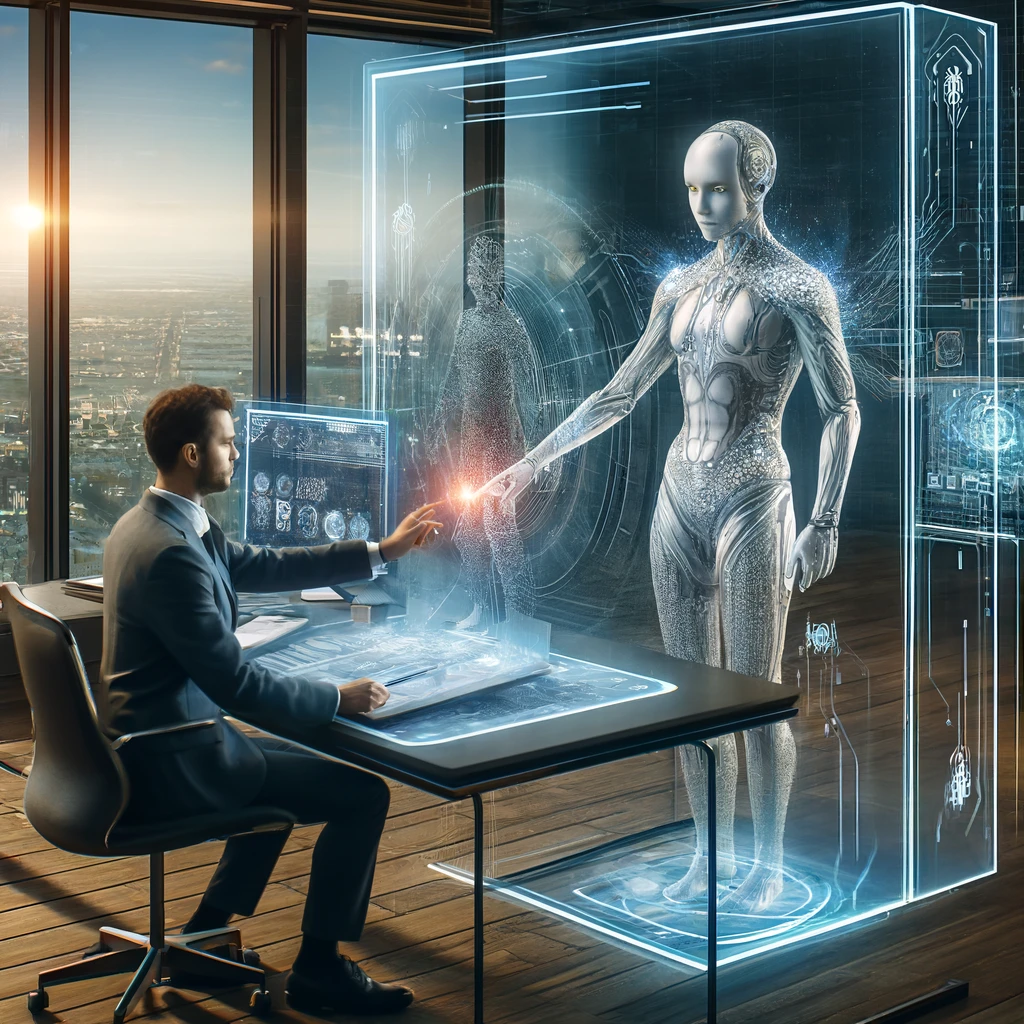Humans and AI are not just coexisting; they are forming a partnership that integrates the strengths of both. This relationship, marked by both opportunities and challenges, requires careful management to ensure a positive trajectory. Below are the key dimensions of human-AI coexistence:
Collaboration and Human Enhancement
- Complementary Strengths: AI excels in data processing and analytical tasks, whereas humans bring creativity, empathy, and ethical reasoning. This synergy can enhance decision-making and innovation.
- Human Augmentation: AI can enhance human capabilities in various sectors, from healthcare, where it aids in diagnostics and treatment plans, to education, where it offers tailored learning experiences.
Economic and Social Contributions
- Transformation of Jobs: While AI transforms the job landscape by automating routine tasks, it also creates new opportunities in AI management, ethical oversight, and development. Transitioning the workforce smoothly through training and education is vital.
- Societal Advantages: AI is poised to tackle significant challenges, including enhancing healthcare, increasing accessibility, and addressing environmental issues.
Ethical Management and Global Governance
- Responsible AI Usage: Ensuring AI’s ethical application requires robust frameworks for fairness, privacy, and transparency, supported by a continuous dialogue among technologists, policymakers, and citizens.
- International Cooperation: Establishing global standards for AI use can help manage risks and distribute benefits equitably.
Addressing Challenges and Risks
- Bias and Inequality: Active efforts are necessary to prevent AI systems from replicating or worsening biases found in training data.
- Security Concerns: AI systems are susceptible to misuse, such as in creating deepfakes or autonomous weaponry, highlighting the need for robust security measures.
This coexistence is already a part of our reality, and the challenge lies in shaping it beneficially. This requires collective efforts across multiple sectors, aiming for a future where AI amplifies human capabilities and societal well-being. As this dynamic partnership evolves, ongoing evaluation and adaptation will be crucial in leveraging opportunities and addressing new challenges.
Advice for Those Impacted Economically by AI For individuals facing economic displacement due to AI, the following strategies can provide guidance:
- Reskilling and Upskilling: Engage in continuous learning to acquire skills relevant in fields less likely to be automated, such as creative or interpersonal roles.
- Career Transition: Identify and move into growing industries or roles less susceptible to automation, leveraging applicable skills.
- Entrepreneurial Ventures: Consider starting a business or consulting in a niche created by AI advancements.
- Policy Engagement and Community Support: Advocate for protective policies and engage with community support networks to navigate transitions.
- Adaptive Mindset and Flexibility: Remain open to new opportunities, ready to adapt to shifts in the employment landscape.
- Financial Preparedness: Build financial resilience through savings and investments to support transitions.
Navigating AI-induced job displacement involves adaptability and proactive planning, emphasizing lifelong learning and flexibility to mitigate the impact of automation. Supportive policies and community networks will play crucial roles in easing this transition.

